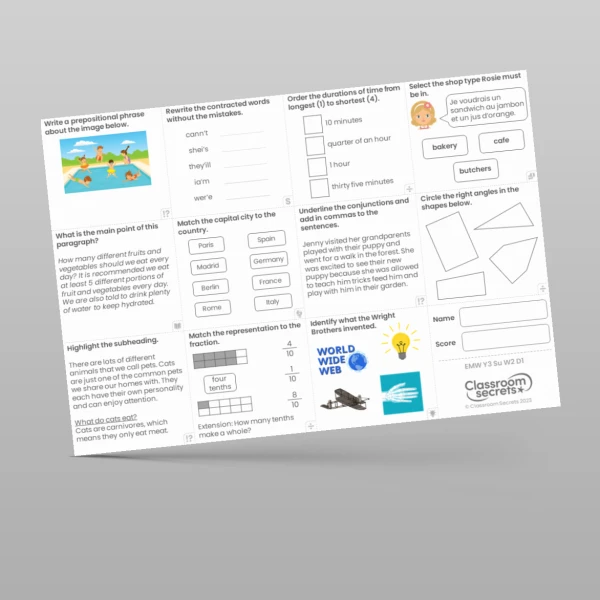

With this KS2 Matching Synonyms Trail Chaser Pack 1, you can challenge your children to find synonyms of a variety of words. The resource is differentiated six ways, making it easier for you to pitch the words to the right level for everyone in your class. The resource presents words in shapes that children need to join to match another word. They have completed the task when every word is attached to its synonym. Download today and use as a class or for individual children. To save on printing, why not display this resource on your board and use it as a whole-class warm up activity?
Curriculum Objectives
- How words are related by meaning as synonyms and antonyms [for example, big, large, little] / Terminology for pupils: synonym / Terminology for pupils: antonym
Tags
Synonyms and Antonyms
6G6.1











